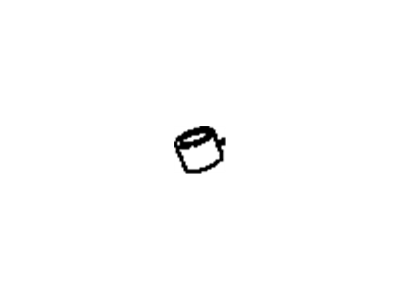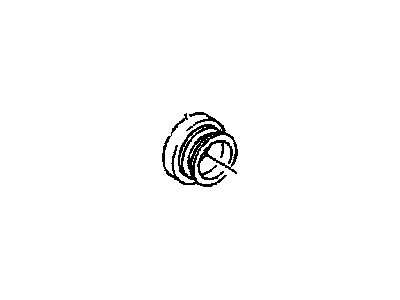
My Garage
My Account
Cart
Genuine Oldsmobile Omega Release Bearing
Clutch Release Throw Out Bearing- Select Vehicle by Model
- Select Vehicle by VIN
Select Vehicle by Model
orMake
Model
Year
Select Vehicle by VIN
For the most accurate results, select vehicle by your VIN (Vehicle Identification Number).
2 Release Bearings found
Oldsmobile Omega Release Bearing
Each OEM Oldsmobile Omega Release Bearing we offer is competitively priced and comes with the assurance of the manufacturer's warranty for the part. Furthermore, we guarantee the speedy delivery of your orders right to your doorstep. Our hassle-free return policy is also in place for your peace of mind.
Oldsmobile Omega Release Bearing Parts Questions & Experts Answers
- Q: How to remove and install the Clutch Disc,Pressure Plate and Release Bearing on Oldsmobile Omega?A:It is common to find out that as the clutch is located between the engine and transaxle, accessing and working on it may require either removal of engine or transaxle. If the engine has not been removed from this system then removing the transaxle is the fastest way to reach the clutch. Mark the pressure plate assembly's relationship with the flywheel for installation purposes after removing the transaxle. Pressure plate assembly needs to be checked for any distortion or bending of the metal fingers on it before removing it. The presence of damage indicates that one should replace pressure plate. On a diagonal pattern, start by loosening all the attaching bolts in order to relieve spring pressure on the pressure plate and you can use them later when attaching back after cleaning them in case they are still in perfect condition. Support this whole assembly firmly and remove attachment bolts followed by pressure plate and clutch disc respectively. Inside the transaxle, remove clutch release bearing as well as release fork too. It is advisable to clean oil and grease from mating surfaces of pressure plate, flywheel, bearing retainer outer surfaces while checking their smoothness respectively so you will get a chance to see whether there is any damage on that particular surface of flywheel which may have occurred during usage. In case damaged sections are noticed on it, whole unit must be replaced immediately since such cases always lead to potential problems that may occur while driving or during braking process if they are not controlled at earlier stages before causing serious accidents. Clutch disc must be examined also for lining wear, loose rivets or springs that may affect its performance during operation thus requiring immediate attention from qualified mechanics who can get new parts needed for replacement purposes after thorough diagnosis of brake related problems. Grooves found on surface indicate that certain parts might have been overheated due excessive heat generated by friction during movement whereas burnt regions shows whether or not some components were subjected to high temperatures above recommended limits hence leading formation of cracks that eventually break apart upon being exposed to heavy load. In case flywheel is only slightly damaged it may be reconditioned on a lathe but deeply damaged one requires complete replacement due to its inability to perform required tasks appropriately at all times. The ring gear teeth must also be checked for any faults that would affect the performance of transmission whereby they should replace the damaged ones with new sets only available at authorized service centers. If there are any breaks or bends in a release fork, ensure this assembly is not ruined as well as no noise should be produced by release bearing when it rotates freely without sticking at all due moisture usually contained inside gearbox. Once oil is traced on clutch components, find out its source and do away with it accordingly so that you will avoid encountering similar cases in future where you will have to repeat same process again since such instances always cause inconvenience especially when driver is rushing somewhere urgently but cannot reach intended destination before breakdown occurs unexpectedly. Align clutch disc and pressure plate precisely as they were marked during their removal while using a centering tool for positioning them properly in relation each other before doing anything else during repair work. These damper springs are positioned towards transaxle while installing the clutch disc hence each spring's leg has been bent exhaustively until it covers an angle of 180 degrees without breaking off from parent part. Torque all the mounting bolts diagonally in order to make them tight then lubricate all these items like reinstalling proper release bearing along with release fork so that everything will remain normal even after engaging first gear again because interference between parts has been avoided thus making them operate smoothly under recommended conditions set by manufacturers themselves after proper installation followed correct touching ups respectively based upon given specifications outlined by makers in manuals issued covering this particular system. At last, attach transaxle onto engine block.




